There are so many delicious South American fruits that are exported abroad, but there is nothing like eating them where they grew.
South America is such a large continent that in each country there are so many local foods and drinks that you can only find in that country.
But with migration people started to take their favourite fruits around the world. And so many incredible fruits in South America are originally from Asia.
And likewise some of the most famous exotic fruits are actually endemic / originally from South America.
Yes with the rise of globalization you can get many of these fruits in your own supermarket. But there is NOTHING like eating them where they were grown.
They are sweeter and more intense.
Don’t believe me? Watch this video about Ecuadorian fruit below!
21 SOUTH AMERICANS FRUITS YOU’LL LOVE
1. Araza
Known as the Amazonian pear, araza is one of those exotic South American fruits known for its very sour flavour.
Originating from the northwestern part of the Amazon and the Rio Ucayali Valley in Peru, this fruit comes from the Eugenia stipitata tree that can tolerate heavy flooding in the Amazon.
Araza resembles a guava with its yellow skin and rich pulp that’s too sour to be consumed on its own.
When you travel to Brazil and Peru, the fruit is usually processed to be turned into a variety of drinks, marmalades and ice cream.
Although it’s not the most delicious-tasting fruit in the Amazon, a lot of people are still interested in it.
Araza is very rare. It is not a cultivated fruit. You can only find the tree in the wild.
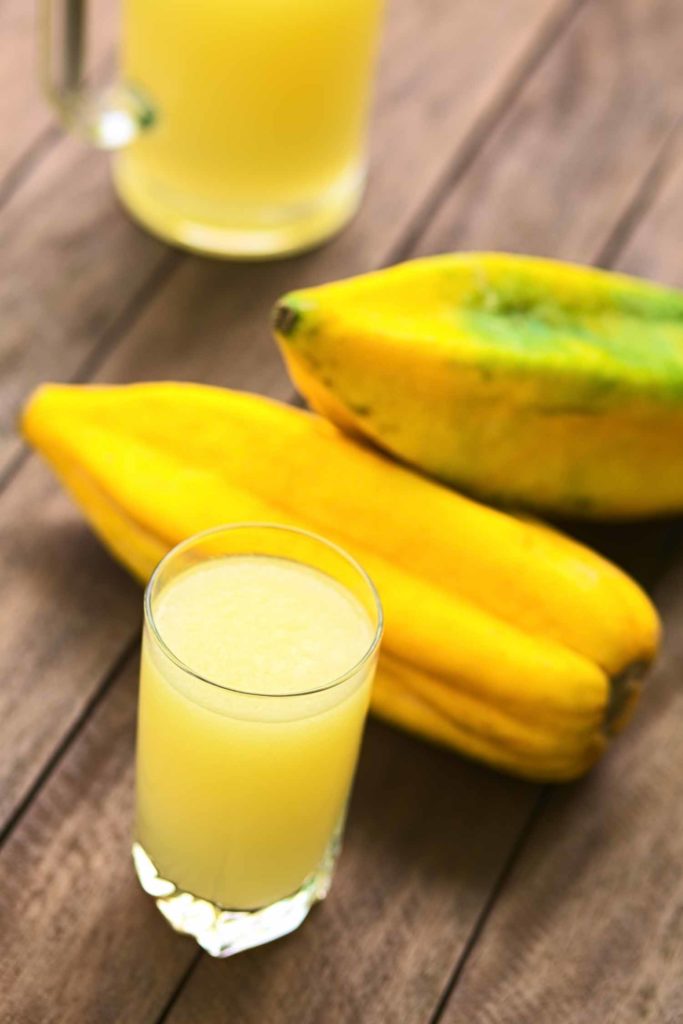
2, Babaco
One of the more odd-looking fruits in South America, babaco resembles the shape of a torpedo with five deep furrows that make it look like a star when cut in half.
Turning golden yellow when fully ripe, the fruit features a smooth skin and inside, you’ll find a yellow flesh with a cotton-like pulp.
Although it is part of the papaya family, it is (in my opinion) so much better as I hate papaya.
One of the things that make babaco unique is its flavor where it has hints of kiwi, pineapple and papaya.
This is why it’s also called mountain papaya. It is very common in Ecuador and you’ll find babaco trees in people’s backyards.
Babaco can be enjoyed raw because of its sweet flavor, but some locals also treat it like a regular papaya and cook with it.
In South America, this fruit is usually turned into smoothies and added into desserts, pies and syrups.
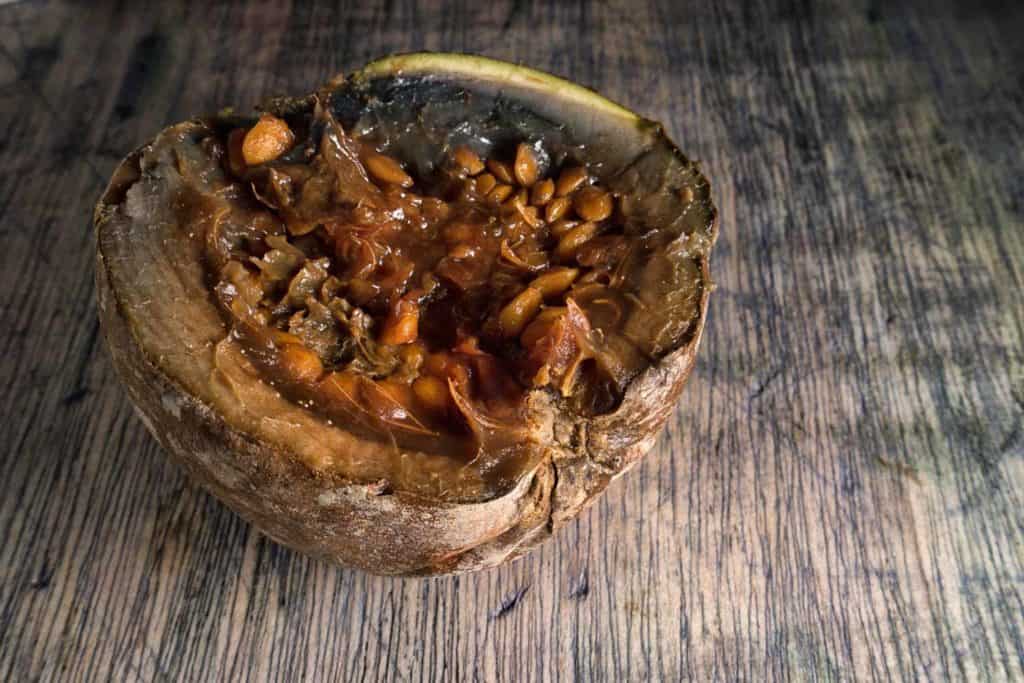
3. Borojo
It’s not the most appetizing among the exotic fruits found in North America, but it’s still popular among locals because of its supposed aphrodisiac benefits.
Native to northwestern Colombia and parts of Ecuador, borojo looks like a guava that eventually turns brown when fully ripe.
It was named after its shape, “boro” meaning head and “jo” meaning fruit.
You can find ripe borojo wrapped in a bag to keep its integrity because it has a very soft and dense texture.
It is often added to hangover or aphrodisiac juice at the market called levantemuertos, or rise of the dead.
Although you need to deal with up to 600 seeds inside the fruit, its sweet and tart flavor will make up for the challenge.
Borojo’s flavor profile is reminiscent of tamarind with a hint of plum and vanilla.
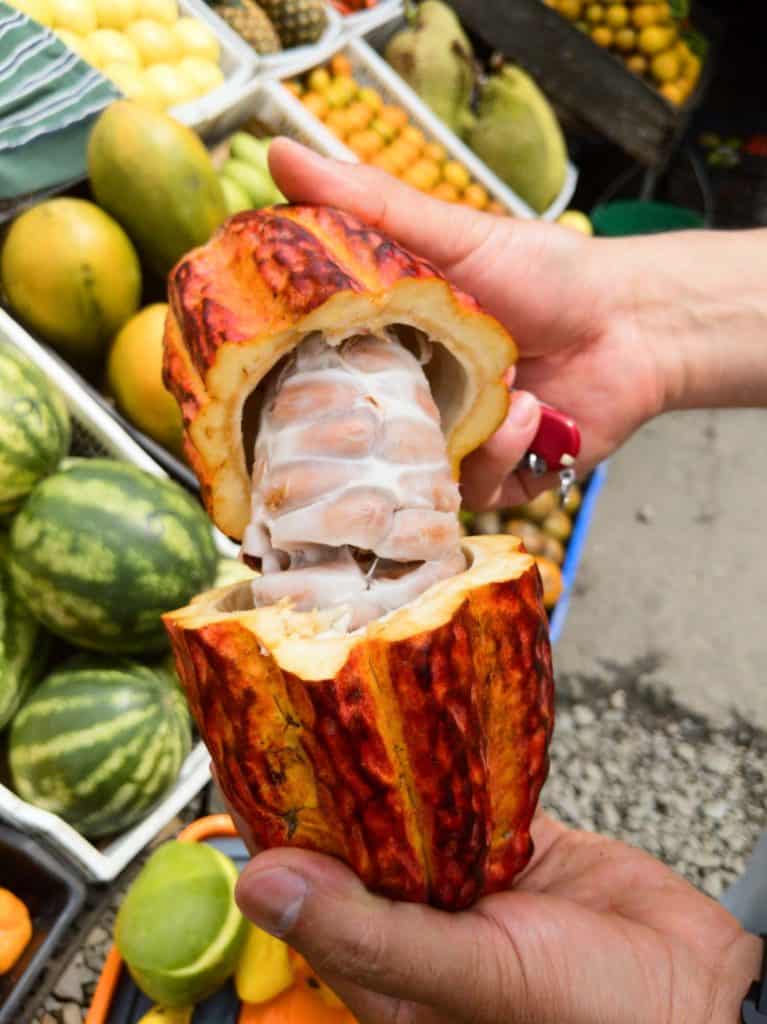
4. Cacao
Although not as exotic as the others like dragon fruits on this list, cacao is one of the more popular South America fruits.
This is mostly because of its end-products: chocolate and cocoa butter.
It was once thought that chocolate originated in Mexico and Central America from the Mayans.
However, that was recently proven false as there is evidence that shows Ecuador as the oldest region for chocolate.
However, it’s not surprising that even thousands of years ago humans traveled and would have taken cacao and the art of chocolate making to other regions.
Today one of the most prized chocolates comes from Ecuador’s Arriba cocoa beans as some of the trees are over 100 years old.
Native to the Amazonian forest, cacao is now grown in many tropical countries around the world with different varieties used mostly for the production of chocolate.
The cacao fruit itself can be red or yellow. Inside there is white pulp filled with seeds that are harvested, dried, roasted and turned into cacao powder that’s the base for chocolate.
Cacao is also used a lot in South American cooking and it’s a popular ingredient in the traditional Latin American drinks.
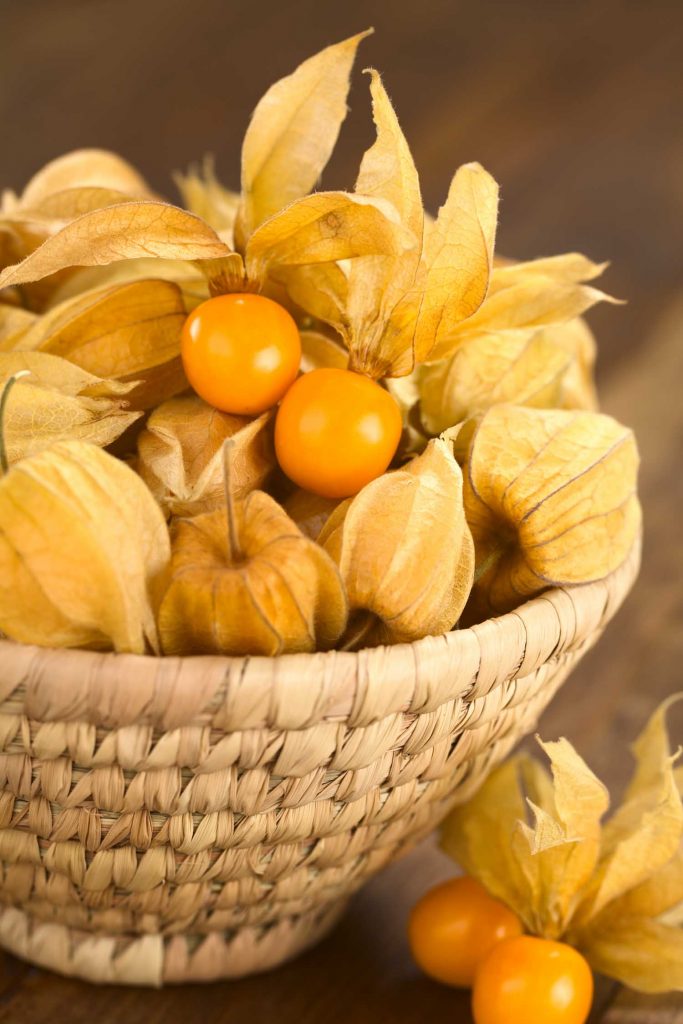
5. Capuli
Native to Cusco, Peru, capuli has a striking resemblance to your traditional cherries.
It’s one of the most popular Latin American fruits that’s sold in the local markets.
The capuli tree is usually planted in gardens and fields where it is used to mark land boundaries.
Capuli season runs from February through April. You’ll see an abundance of these cherry-like fruits being sold by local farmers.
Because of its sweet flavor profile, capuli can be enjoyed on its own, although some use it to make different dishes and desserts.
This South America fruit has traveled far and wide and now a common fruit from Thailand and Cambodian fruit.
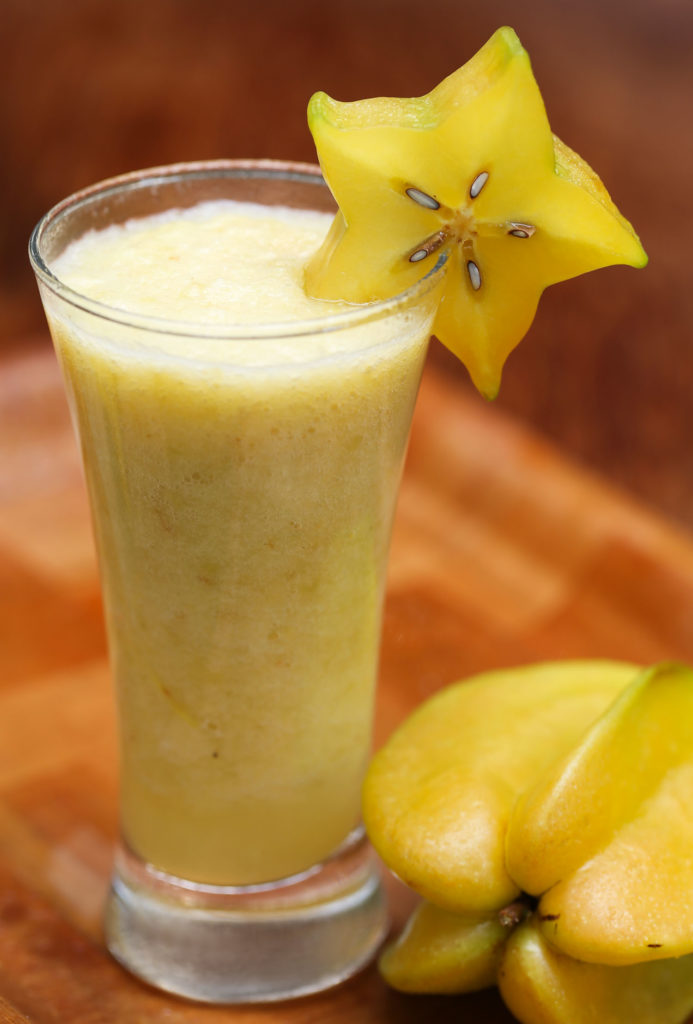
6. Carambola
Resembling the shape of a star when sliced, carambola is another exotic South American fruit that’s also referred to as star fruit in some parts of the world.
Native to Southeast Asia, carambola eventually became popular in South American countries. It’s especially popular for its peculiar shape and surprisingly good flavor.
From its thin skin, you’ll find a yellow flesh and some brown seeds inside the carambola.
The beautiful honey aroma of this fruit will remind you of being in a tropical country and it also tastes like a grape or plum.
It’s one of the most popular Ecuadorian drinks and drinks in Mexico.
Although it’s best enjoyed during the summer, carambola is available all year-round.
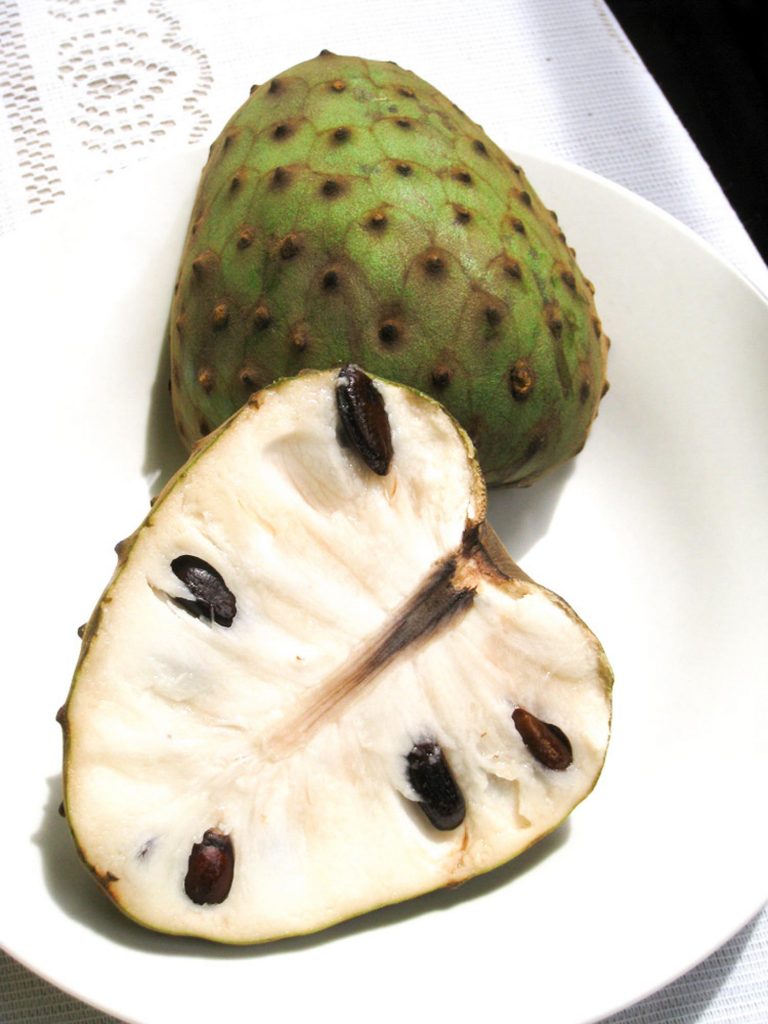
7. Cherimoya
Believed to have originated in Peru and Ecuador, the cherimoya is an odd-looking fruit that has a green, velvety skin. It’s also one of the more popular Malaysian fruit and Filipino fruits, although known as atis.
It is usually heart or egg shaped and opening it reveals a white pulp with flavors reminiscent of banana, mango, pineapple or vanilla.
Cherimoya or custard apple became very popular around the world after it was described by the American writer Mark Twain as “the most delicious fruit known to men.”
This is one of the South American fruits and vegetables that can be eaten on its own.
It is commonly very sweet and almost tart, but it can also be used for salads, smoothies and even ice cream.
Cherimoya season usually runs from the late fall up until spring, so you have plenty of time to try this amazing exotic fruit.
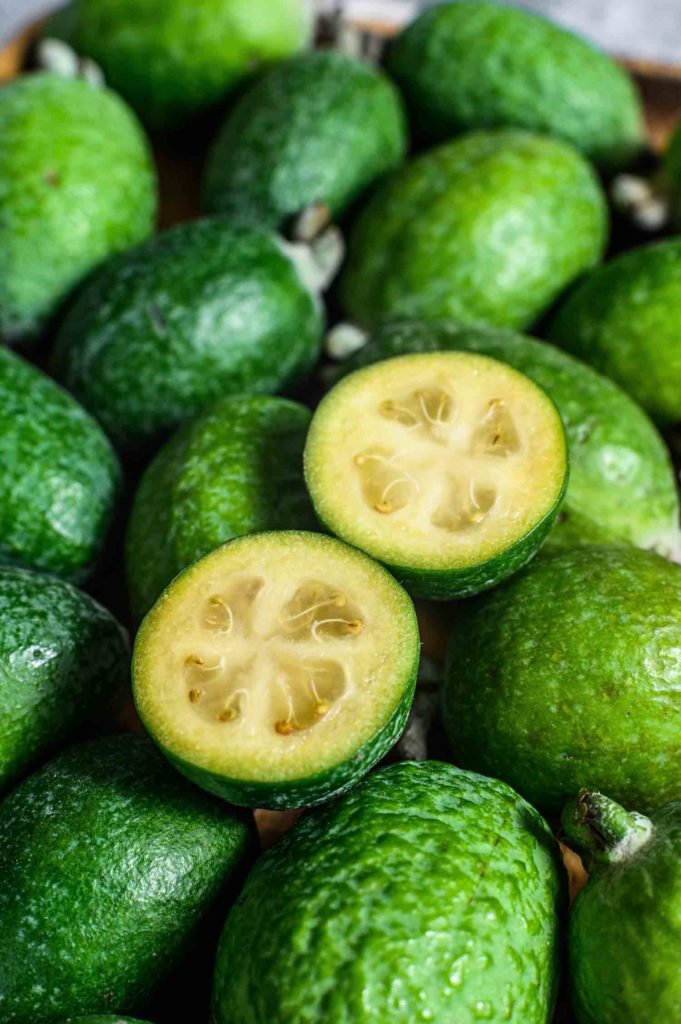
8. Feijoa
Closely resembling a guava, the feijoa fruit is almost as big as an egg with a green skin that looks and feels like a lime.
Grown mostly in Paraguay, Brazil, Colombia and Argentina, this fruit tastes like apple, pineapple and a bit of mint.
Feijoa has a juicy flesh with that distinctive tropical aroma and tartness.
Aside from being eaten on its own, feijoa is also used as an ingredient in many South American dishes. It can be preserved, pureed, caramelized, baked and sauteed.
It also pairs well with different types of cheese and it’s a well-known ingredient in ice cream, baked goods and sorbets.
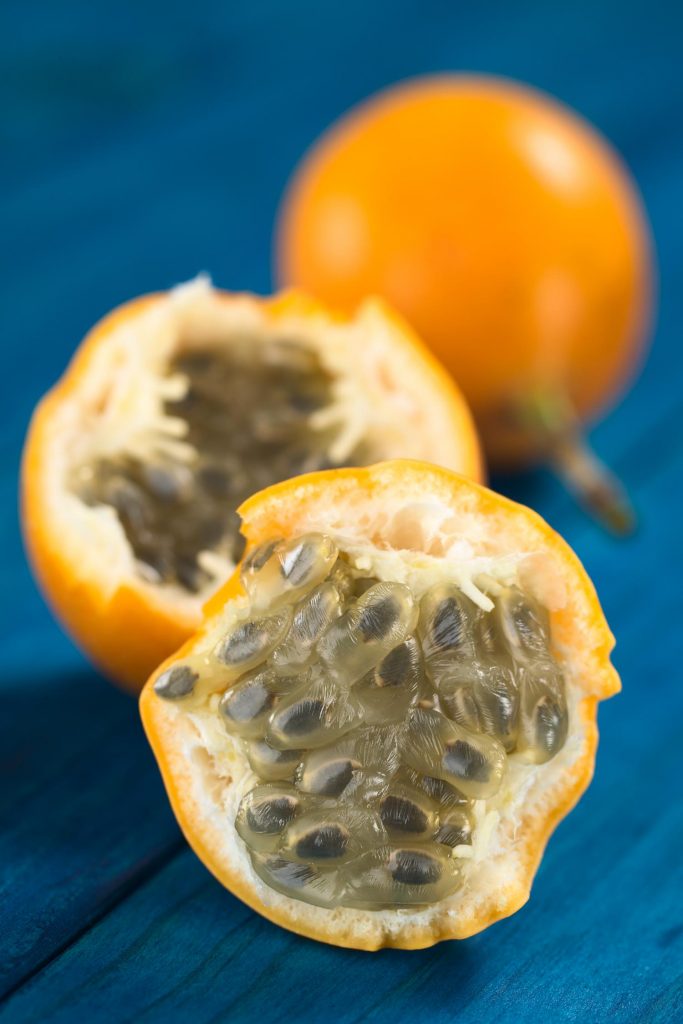
9. Granadilla
Looking exactly like a passion fruit, granadilla has a distinctive yellow orange skin and jelly-like flesh with some black seeds.
You can find a lot of the granadilla tree all over Latin America and is a common Colombian fruit.
It is widely cultivated not only for its flavor but also for its many health benefits where it’s a good source of vitamins A and C, a good antioxidant.
It can help boost collagen production to slow down the signs of aging.
Granadilla is traditionally eaten by scooping out the pulp with a spoon to enjoy its sweet flavor.
But it’s also used by locals for juicing and as an ingredient for desserts like cakes.
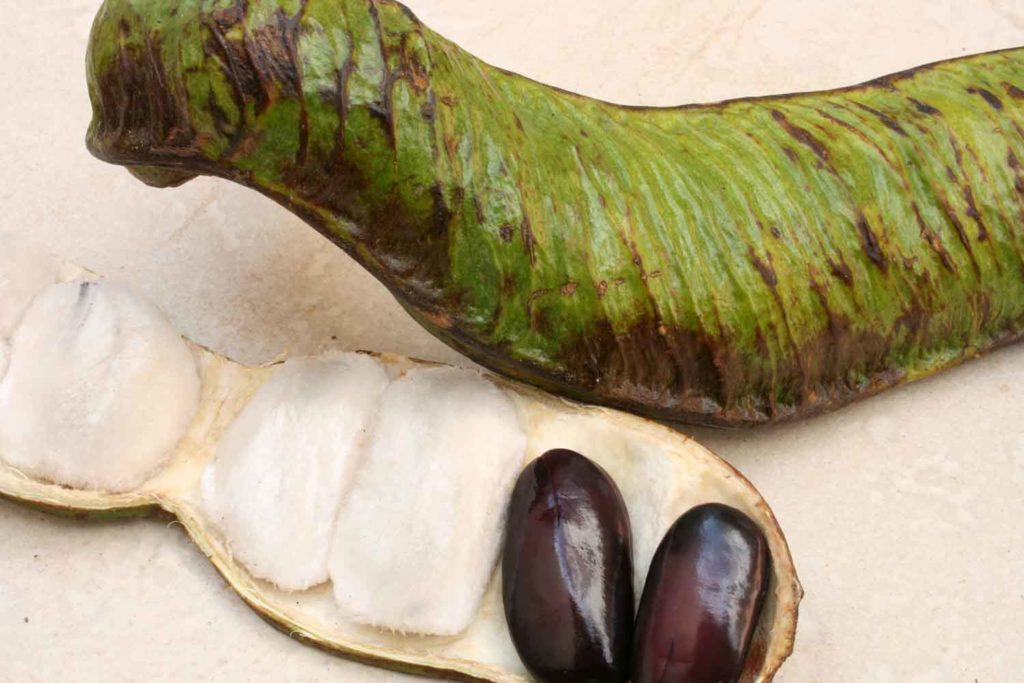
10. Guaba
Not to be confused with guava, this South America fruit is known widely as Ecuador’s ice cream bean. It is also known as the padoo fruit in Trinidad.
These Ecuadorian fruits have been called the ice cream bean because its flavor profile resembles that of vanilla.
Guaba look like long beans with a rough green skin. But once you open it, you’ll see a white, cottony flesh that covers the precious black seeds.
Eating guaba can be quite an experience because you start off with a fuzzy pulp that eventually becomes slippery as it gets wet.
You’ll also need to deal with some of the residue stuck on your teeth after eating it.
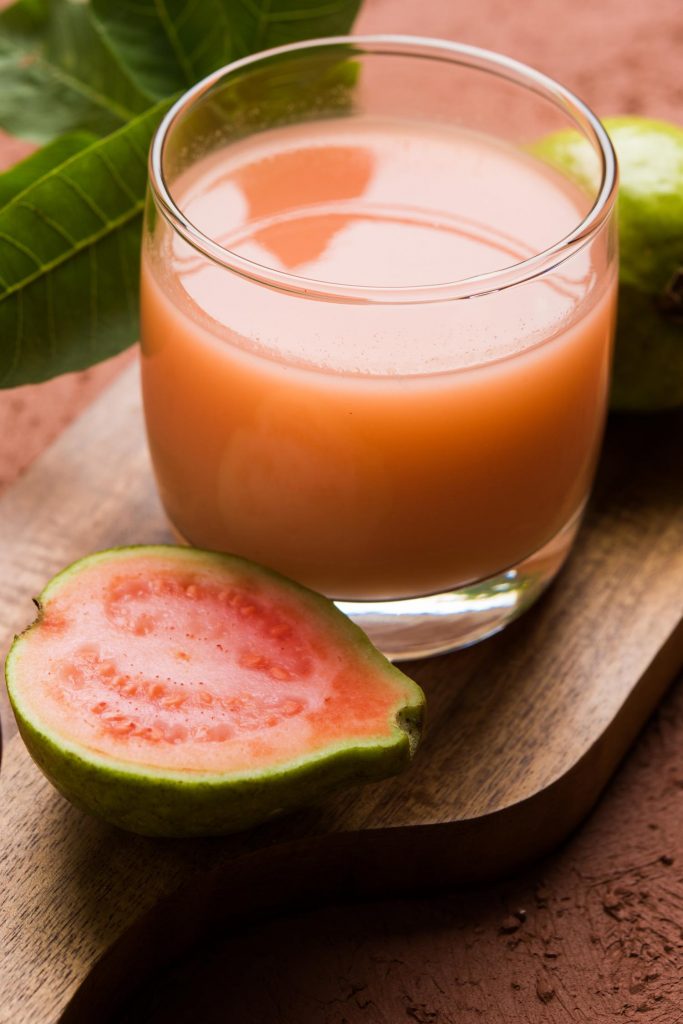
11. Guava
Guava is widely cultivated in northern South America, Central America and the Caribbean. It’s also a popular Costa Rican fruit.
Guava is a small, sweet tropical fruit that belongs to the berry family. But it doesn’t really look like a berry at all.
Guava resembles a small apple with green skin and a soft, pinkish flesh and tiny, edible seeds.
With such a tropical aroma, guava has a unique sweet flavor profile that’s quite similar to papaya, pineapple and banana.
Guava season runs from spring through winter. Aside from being eaten raw it can also be used for a wide variety of dishes, desserts and salads.
It’s one of the most popular drinks in Colombia.
In fact, it’s a popular ingredient for gelatos, panna cottas and ice creams all over South America. It also makes one of the prettiest drinks that are pink.
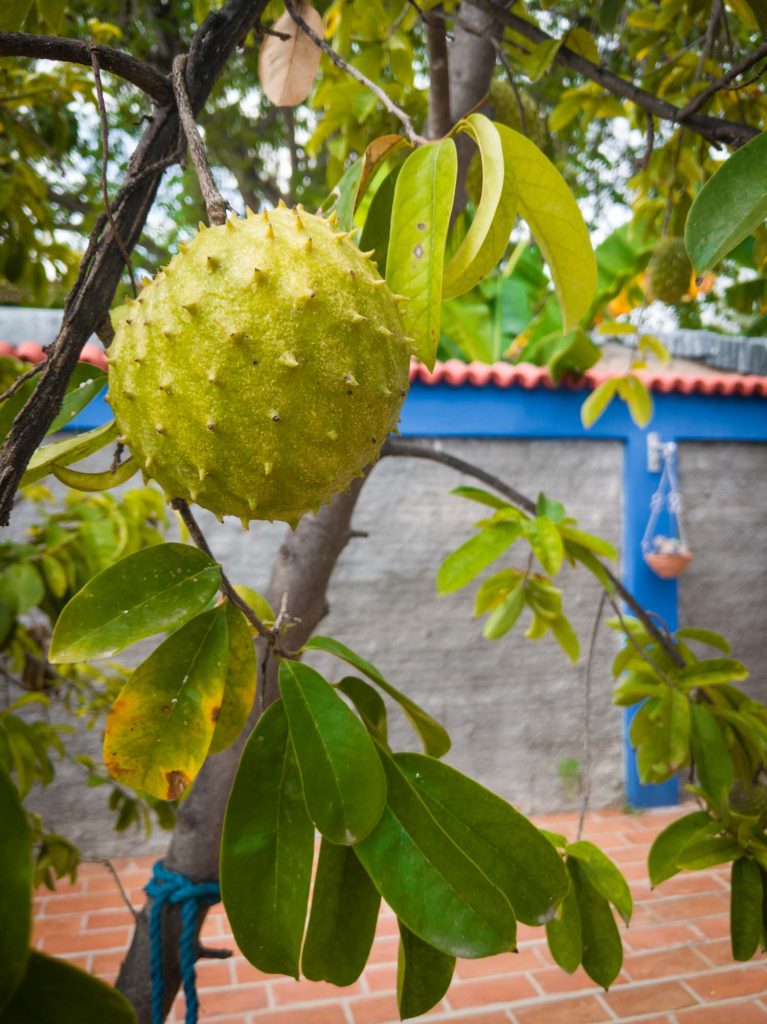
12. Guanabana
One of my top five favourite fruits around the world.
Also known as soursop, guanabana can easily make you curious with its odd-looking, green spiny skin.
But once you get past that curious skin you’ll see a white, pulpy flesh with a sweet and milky flavor.
Guanabana is such a delicate fruit with its very thin skin and once fully ripe, it should be consumed within a few days before it starts to rot.
Eating guanabana can be likened to eating custard because of its soft flesh.
But it has a very distinct flavor profile that’s sweet like a banana but highly acidic like pineapple.
Aside from being consumed on its own, the guanabana is also used for smoothies, juices, desserts and even cocktails.
I love it as a yogurt flavour.
It’s a great fruit because it can easily blend well with other flavors and it also has loads of health benefits.
13. Jabuticaba
Looking strikingly similar to dark berries, jabuticaba is one of the tropical fruits (another example is sweet granadilla) that’s widely grown in the Brazilian region.
But you can also find it in Bolivia, Paraguay, Argentina and Peru.
This round fruit starts from being bright green and eventually turns to dark purple when fully ripe.
It features a tough exterior with a soft, pinkish flesh that’s both sweet and tart when eaten on its own.
Jabuticaba’s flavor can be compared to muscadine grapes and it’s used a lot in marmalades, jams and desserts all over Brazil.
14. Jocote
Belonging to the cashew family, one of the most unique Brazilian fruits, jocote looks like a small berry that’s composed mostly of a huge seed inside of it.
Also known as siniguelas or hog plum, jocote has a distinct sweet and tangy taste that make it a great fruit to munch on, especially when it’s dipped in salt.
In South America, jocote is usually made into desserts where it’s usually soaked in syrup.
It’s also common throughout Latin America and is a popular Guatemalan fruit and common fruits in Nicaragua.
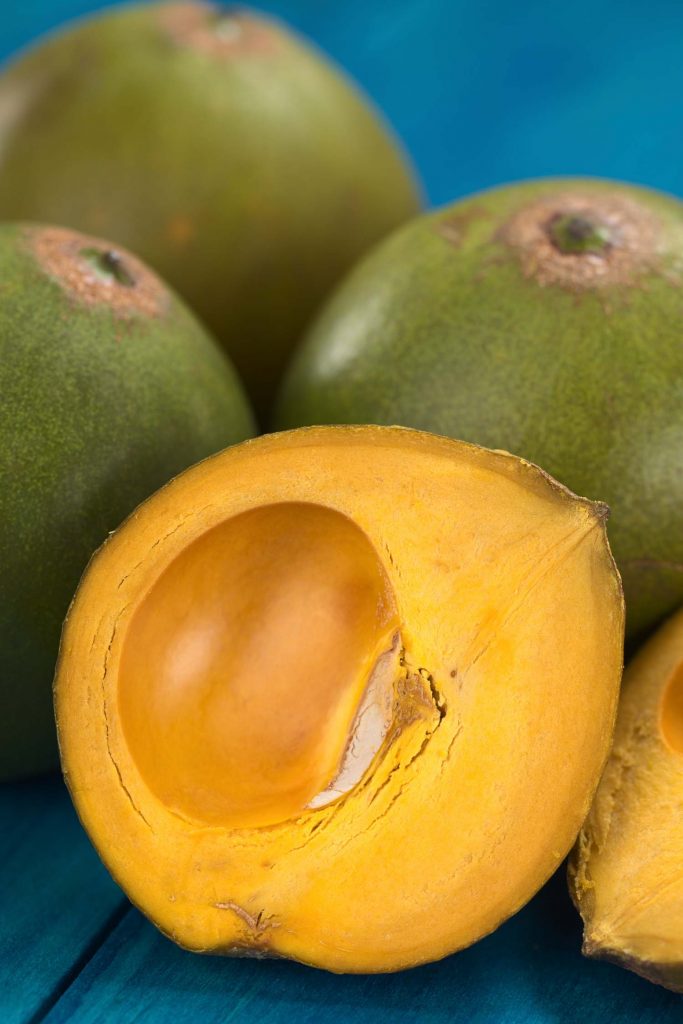
15. Lucuma
Native to South America, lucuma is mostly popular for its perceived health benefits, which is why it’s named the “gold of the Incas.”
This hard, green fruit has a soft flesh that tastes like a combination of sweet potato and butterscotch.
It is often eaten raw in Ecuador, Chile, Peru and Bolivia. But is most commonly known as a Peru fruit and that’s because it is the national fruit of Peru.
But also, it’s now more popular in the form of a powder that’s used as a healthier alternative to table sugar.
16. Mamey
Brown on the outside and bright orange on the inside, mamey sapote is strikingly similar in shape to a papaya, only smaller.
It’s not often considered a Cuban fruit, but it’s actually the national fruit of Cuba.
Its skin is usually thick and rough, but the flesh underneath is soft and creamy. It almost has a squash-like consistency that can be enjoyed raw but only when fully ripe.
The seeds, on the other hand, shouldn’t be consumed because it’s inedible and toxic. So be careful!
This is another fruit you’ll find all over Latin America and is one of my favourite Mexican fruit. And if you like it you may enjoy sapodilla a similar fruit in Mexico but interestingly a delicious fruit in Vietnam too!
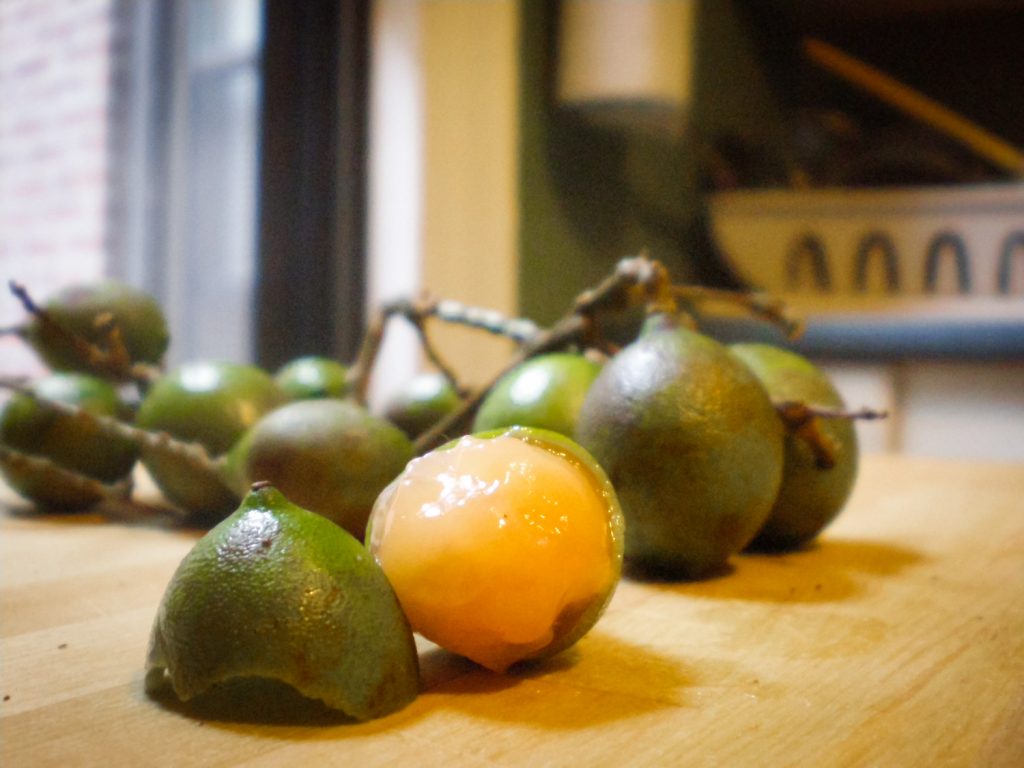
17. Mamoncillo
More popularly known as the Spanish lime and quenepas, mamoncillo is a small, round, green fruit with a flesh that looks just like a lychee. These are also Jamaican fruits but known there as cherries guinep and known as leci fruit in Bali.
When unripe, mamoncillo has a weird, almost hairy texture and sour flavor.
But it becomes very sweet with a hint of acid when fully ripe, so it’s likened to eating a combination of lychee and lime in one fruit.
Aside from being consumed on its own, mamoncillo can also be cooked for desserts and beverages.
You can also find it being added in some cocktails in South America.
18. Maracuya
Maracuya is simply passion fruit in Spanish, but this is another Central American fruits can be a bit different from your typical passion fruit.
For one, its skin could be covered with light yellow specks and when fully ripe, it can turn very wrinkly and soft to touch.
Maracuya can be consumed raw just by scooping out the flesh and enjoying it like a jelly, but it can also be used in salads, parfaits, yogurts and ice creams.
Some people have an issue with the texture when eating it raw so I often add it to plain yogurt and top it with granola.
You’ll find this South American fruit as far as South East Asia where it’s a popular fruit in Laos.
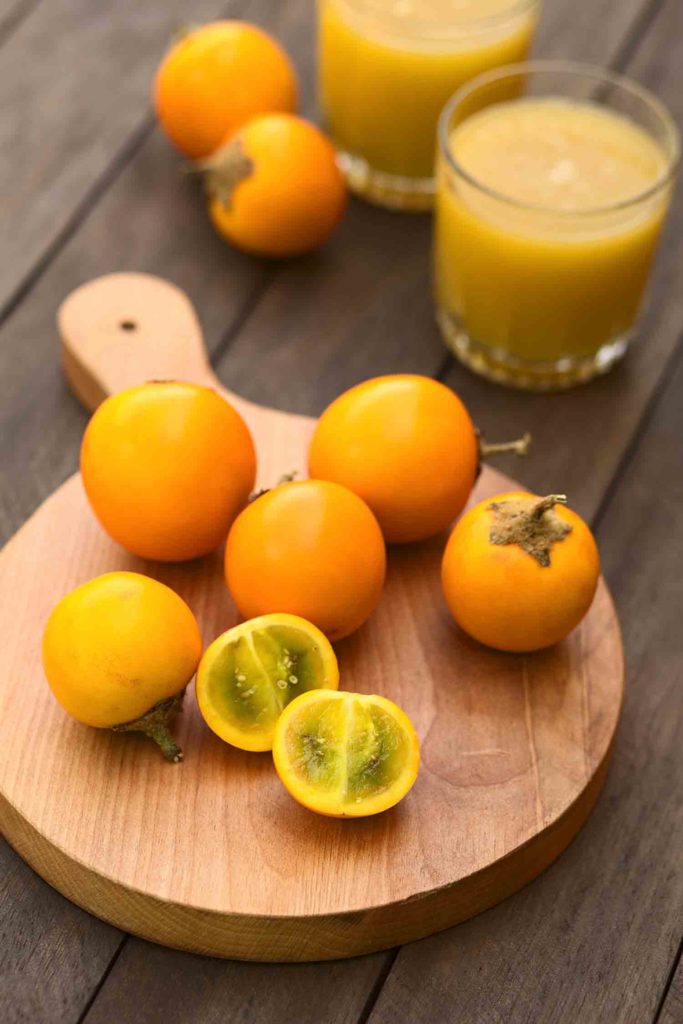
19. Naranjilla
Also known as lulo, naranjilla can easily be mistaken for tomatoes because of its orange skin and strikingly similar flesh.
But this tropical fruit is actually named after the Spanish term for little oranges.
It it’s widely grown across America and sold in local markets to be eaten raw or turned into juice.
The pulp is also used for making ice cream, sorbets and baked goods.
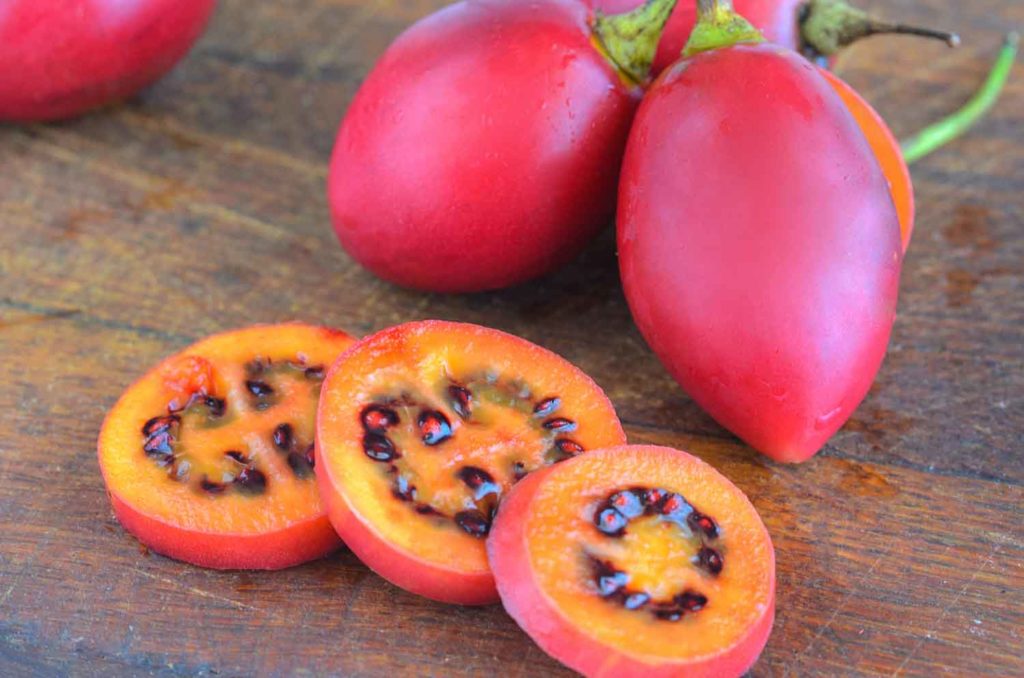
20. Tamarillo
Also known as tomate de arbol, the tamarillo is a small, egg-shaped fruit that’s grown in the South American countries of Colombia, Peru and Ecuador.
Once opened, you’ll see a soft, dense flesh that tastes sweet and tart with a hint of bitterness to it.
Tamarillo season runs from the fall through winter where it’s widely eaten and used for both sweet and savory dishes.
This fruit is usually added to porridge, oatmeal or yogurt for breakfast or as flavoring for ice creams and other desserts.
But my absolute favourite way to eat it is as aji de tomate de arbol, which is a tree tomato hot sauce found on every table in Ecuador’s highlands and pairs so well with Ecuadorian food.
This aji is spicy but also fruity.
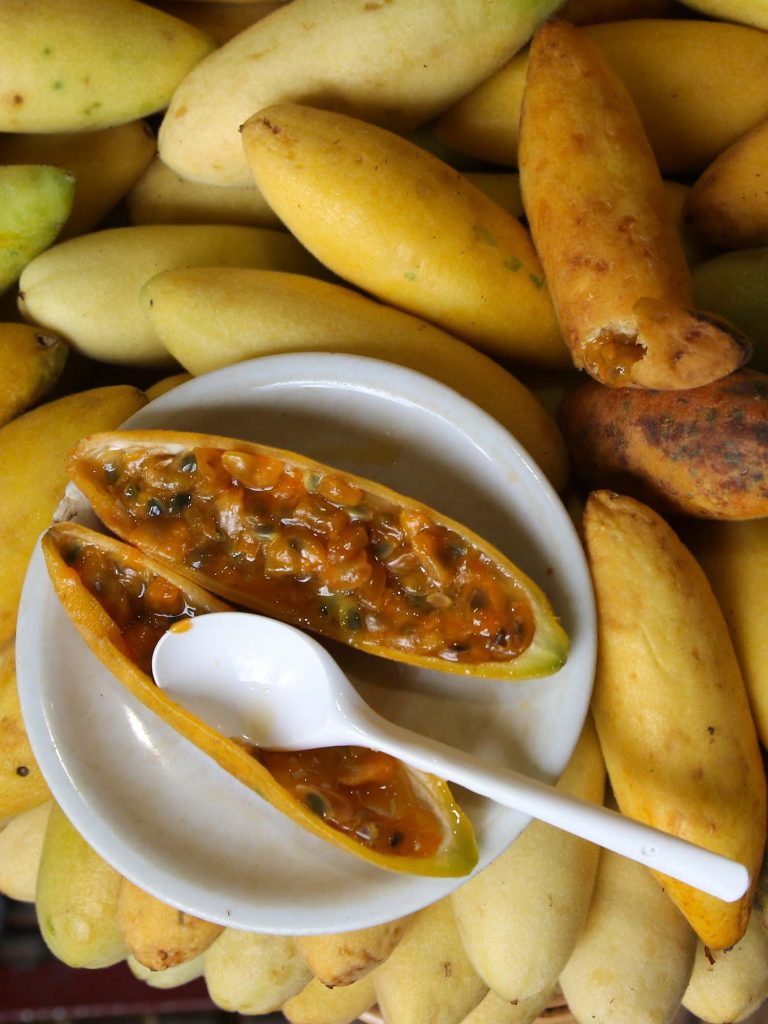
21. Taxo
More popularly known as banana passionfruit, taxo is widely grown in the high elevation forests of South America.
It has a distinct yellow flesh that can be compared to passion fruit while it looks like a small, ripe banana from the outside, thus the name.
Although it can be enjoyed raw, taxo is used mostly for juice and ice cream in South America.
Pin it: South America Fruits
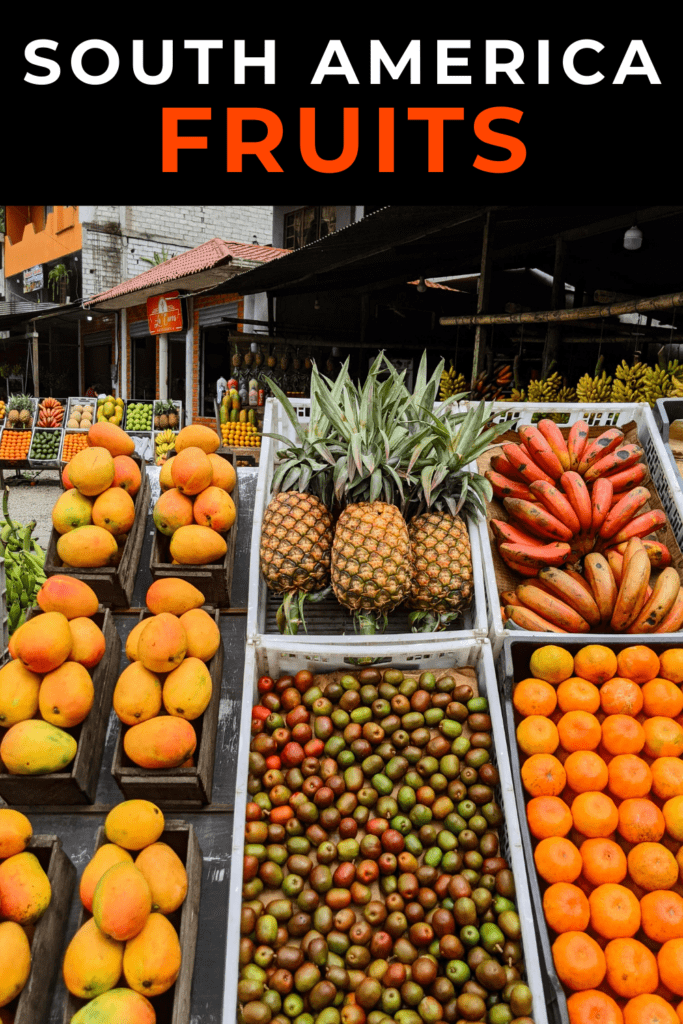
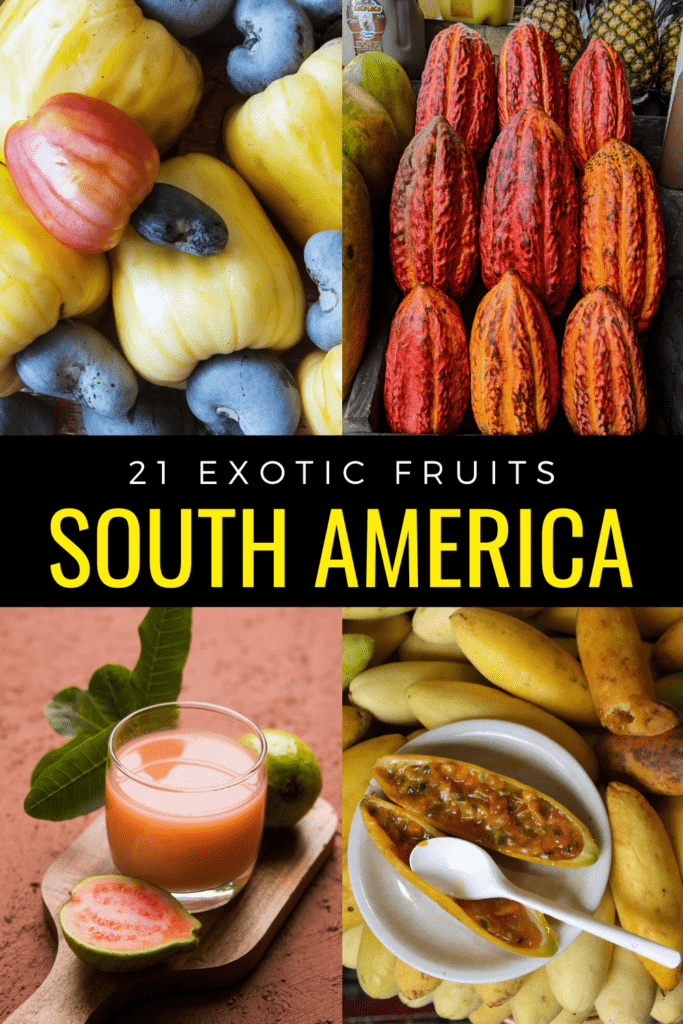
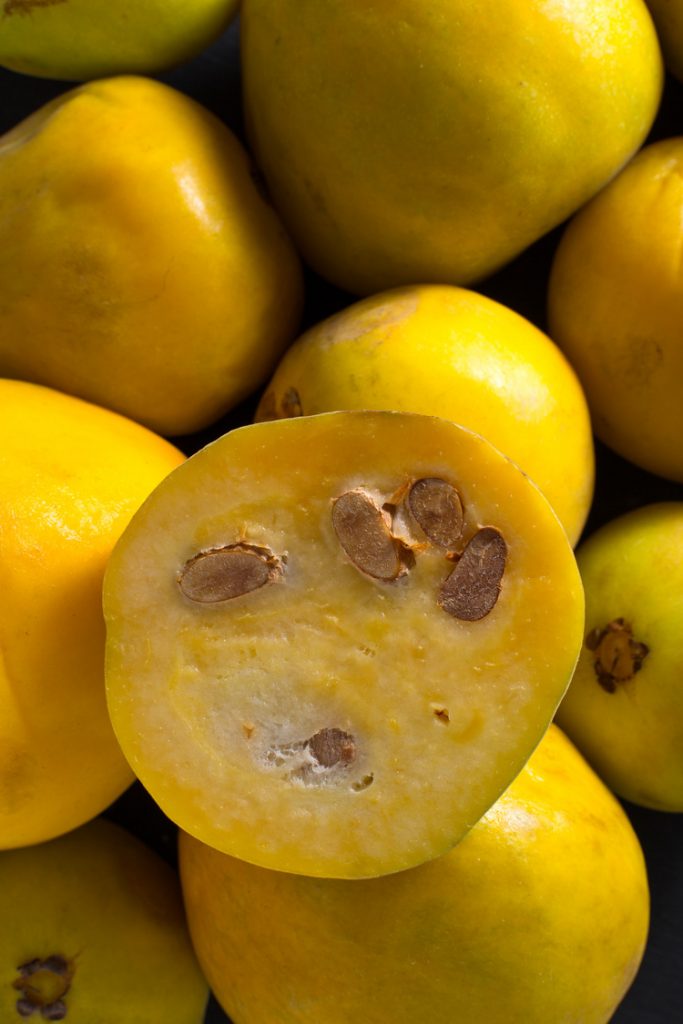
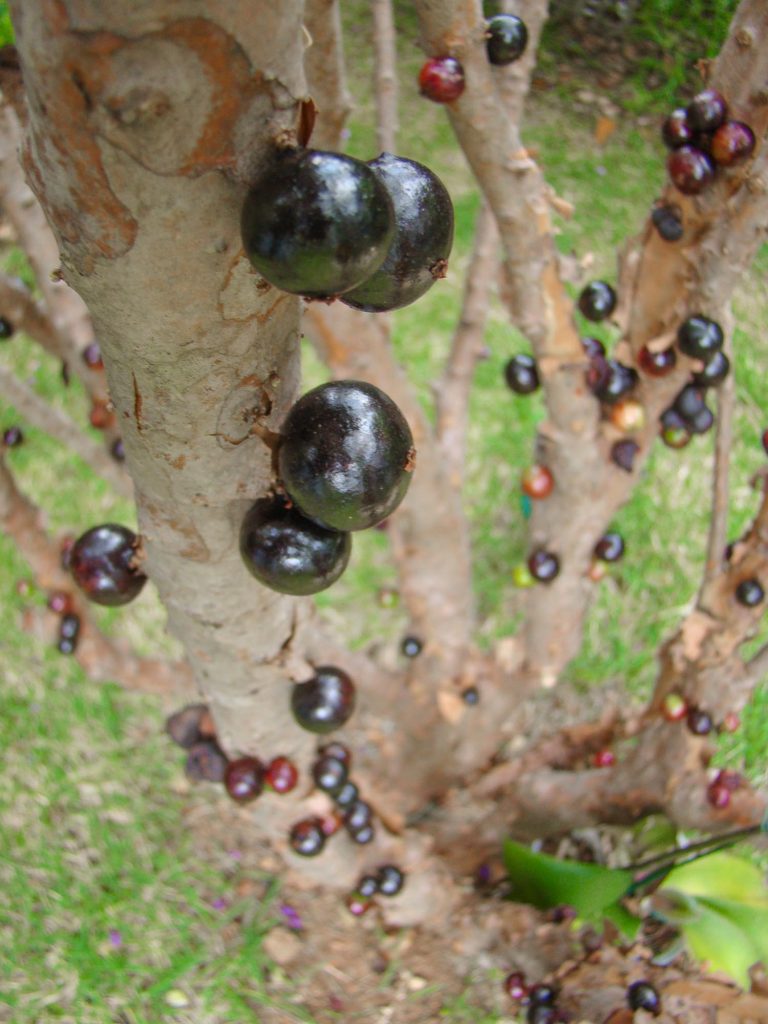
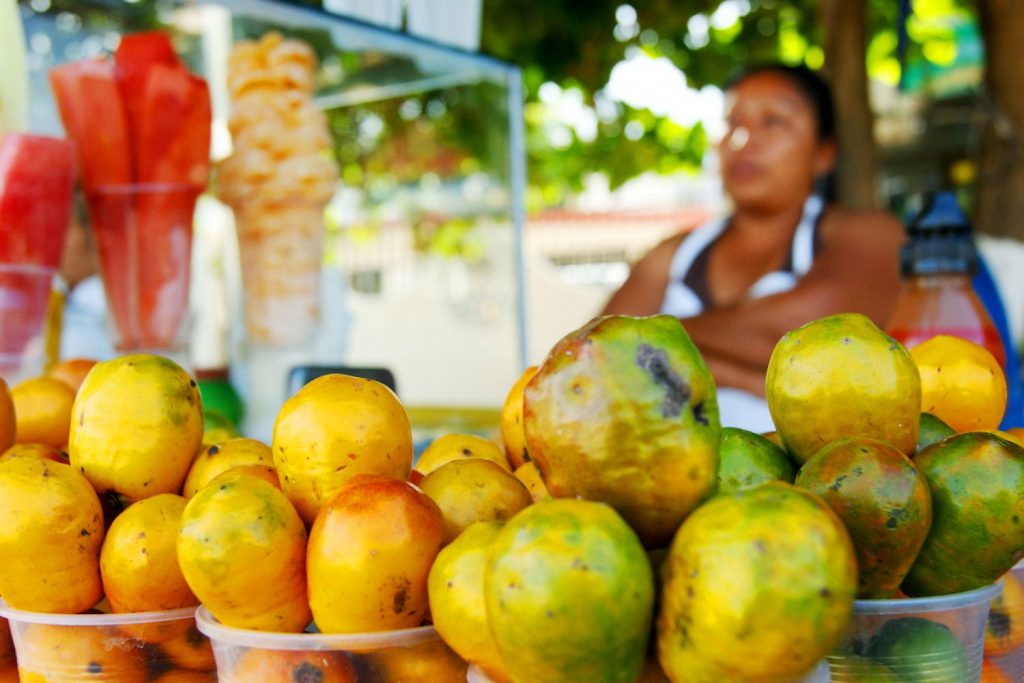
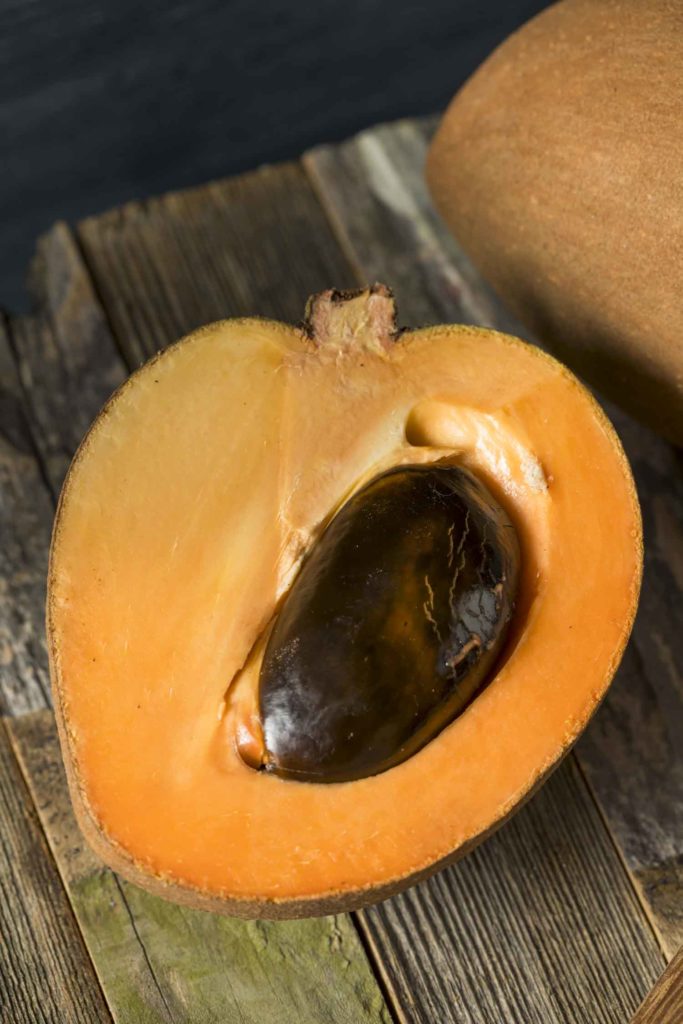
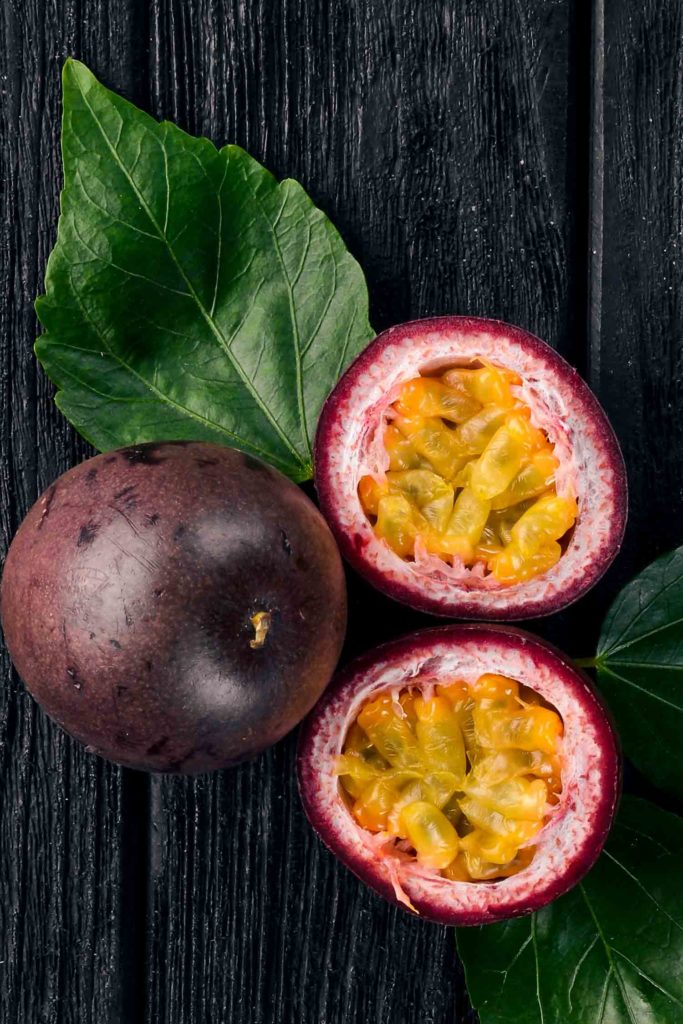
Very interesting post and details about South American fruits. I tried and liked gauva and star fruit. I looked forward to trying the others.